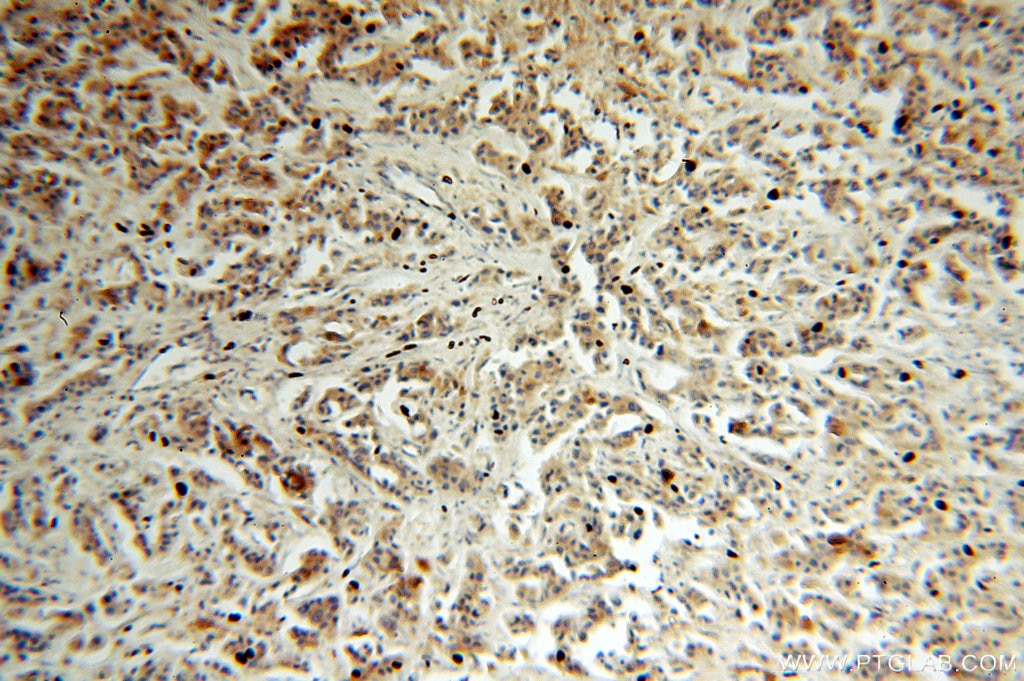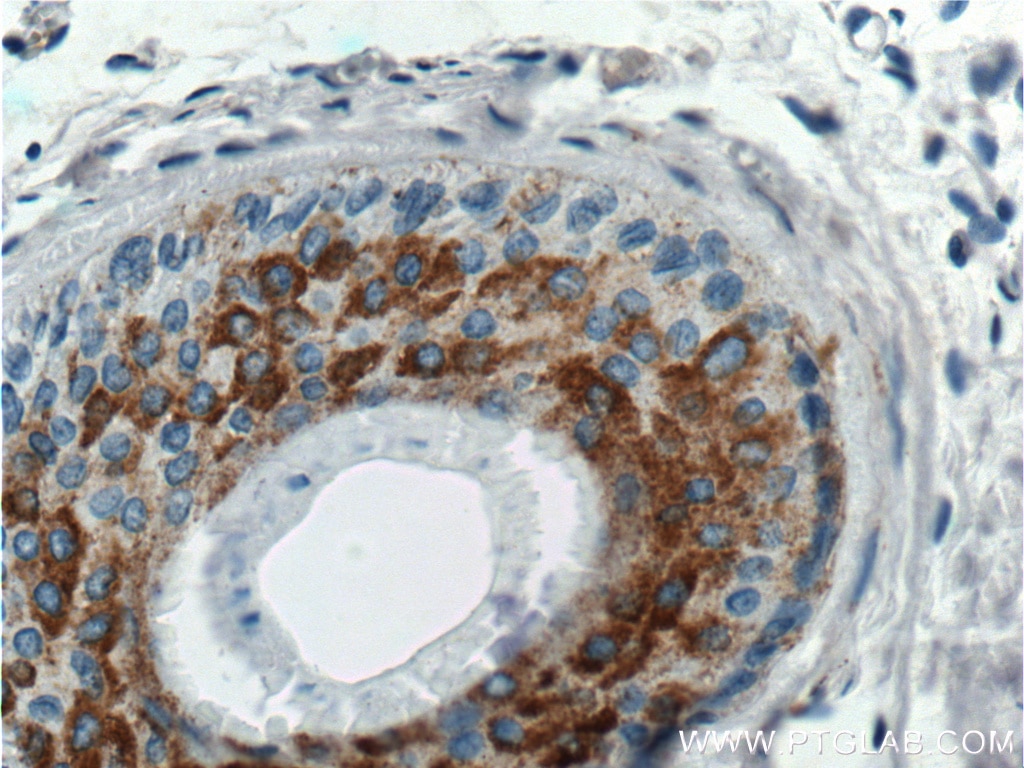Tested Applications
| Positive IHC detected in | human breast cancer tissue, human skin tissue Note: suggested antigen retrieval with TE buffer pH 9.0; (*) Alternatively, antigen retrieval may be performed with citrate buffer pH 6.0 |
Recommended dilution
| Application | Dilution |
|---|---|
| Immunohistochemistry (IHC) | IHC : 1:20-1:200 |
| It is recommended that this reagent should be titrated in each testing system to obtain optimal results. | |
| Sample-dependent, Check data in validation data gallery. | |
Published Applications
| IHC | See 1 publications below |
Product Information
16442-1-AP targets ST6GALNAC5 in IHC, ELISA applications and shows reactivity with human samples.
| Tested Reactivity | human |
| Cited Reactivity | human |
| Host / Isotype | Rabbit / IgG |
| Class | Polyclonal |
| Type | Antibody |
| Immunogen |
CatNo: Ag9767 Product name: Recombinant human ST6GALNAC5 protein Source: e coli.-derived, PGEX-4T Tag: GST Domain: 28-336 aa of BC001201 Sequence: SLGGQKERPPQQQQQQQQQQQQASATGSSQPAAESSTQQRPGVPAGPRPLDGYLGVADHKPLKMHCRDCALVTSSGHLLHSRQGSQIDQTECVIRMNDAPTRGYGRDVGNRTSLRVIAHSSIQRILRNRHDLLNVSQGTVFIFWGPSSYMRRDGKGQVYNNLHLLSQVLPRLKAFMITRHKMLQFDELFKQETGKDRKISNTWLSTGWFTMTIALELCDRINVYGMVPPDFCRDPNHPSVPYHYYEPFGPDECTMYLSHERGRKGSHHRFITEKRVFKNWARTFNIHFFQPDWKPESLAINHPENKPVF Predict reactive species |
| Full Name | ST6 (alpha-N-acetyl-neuraminyl-2,3-beta-galactosyl-1,3)-N-acetylgalactosaminide alpha-2,6-sialyltransferase 5 |
| Calculated Molecular Weight | 38 kDa |
| GenBank Accession Number | BC001201 |
| Gene Symbol | ST6GALNAC5 |
| Gene ID (NCBI) | 81849 |
| RRID | AB_10597112 |
| Conjugate | Unconjugated |
| Form | Liquid |
| Purification Method | Antigen affinity purification |
| UNIPROT ID | Q9BVH7 |
| Storage Buffer | PBS with 0.02% sodium azide and 50% glycerol, pH 7.3. |
| Storage Conditions | Store at -20°C. Stable for one year after shipment. Aliquoting is unnecessary for -20oC storage. 20ul sizes contain 0.1% BSA. |
Protocols
| Product Specific Protocols | |
|---|---|
| IHC protocol for ST6GALNAC5 antibody 16442-1-AP | Download protocol |
| Standard Protocols | |
|---|---|
| Click here to view our Standard Protocols |










